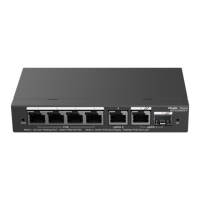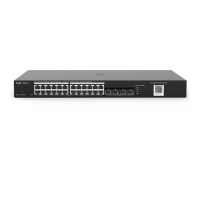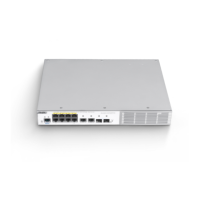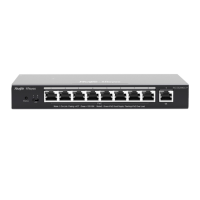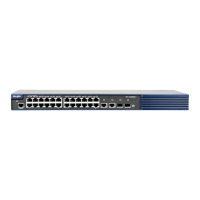Web-based Configuration Guide L2 Multicast
79
The device running IGMP Snooping identifies the ports in the
VLAN as router ports or member ports. The router port is the
port on the Layer 2 multicast device that is connected to the
Layer 3 multicast device, and the member port is the host port
connected to the group on the Layer 2 multicast device.
By snooping IGMP packets, the L2 multicast device can
automatically discover and maintain dynamic multicast router
ports.
List of current multicast router ports includes dynamically
learned routed ports (if Dynamic Learning function is enabled)
and statically configured routed ports.
After it is enabled, when the port receives the Leave packets,
it will immediately delete the port from the multicast group
without waiting for the aging timeout. After that, when the
device receives the corresponding specific group query
packets and multicast data packets, the device will no longer
forward it to the port.
This function is applicable when only one host is connected to
one port of the device, and is generally enabled on the access
switch directly connected to the endpoint.
Aging time of dynamically learned multicast router ports
ranges from 30 to 3600, in seconds.
Aging time of dynamically learned member ports of a multicast
group, in seconds.
In the displayed dialog box, select a port and set it as the
static router port. When a port is configured as a static router
port, the port will not age out
5.4 Configuring MVR
5.4.1 Overview
IGMP snooping can forward multicast traffic only in the same VLAN. If multicast traffic needs to be forwarded to
different VLANs, the multicast source must send multicast traffic to different VLANs. In order to save upstream
bandwidth and reduce the burden of multicast sources, multicast VLAN register (MVR) comes into being. MVR
can copy multicast traffic received from an MVR VLAN to the VLAN to which the user belongs and forward the
traffic.
